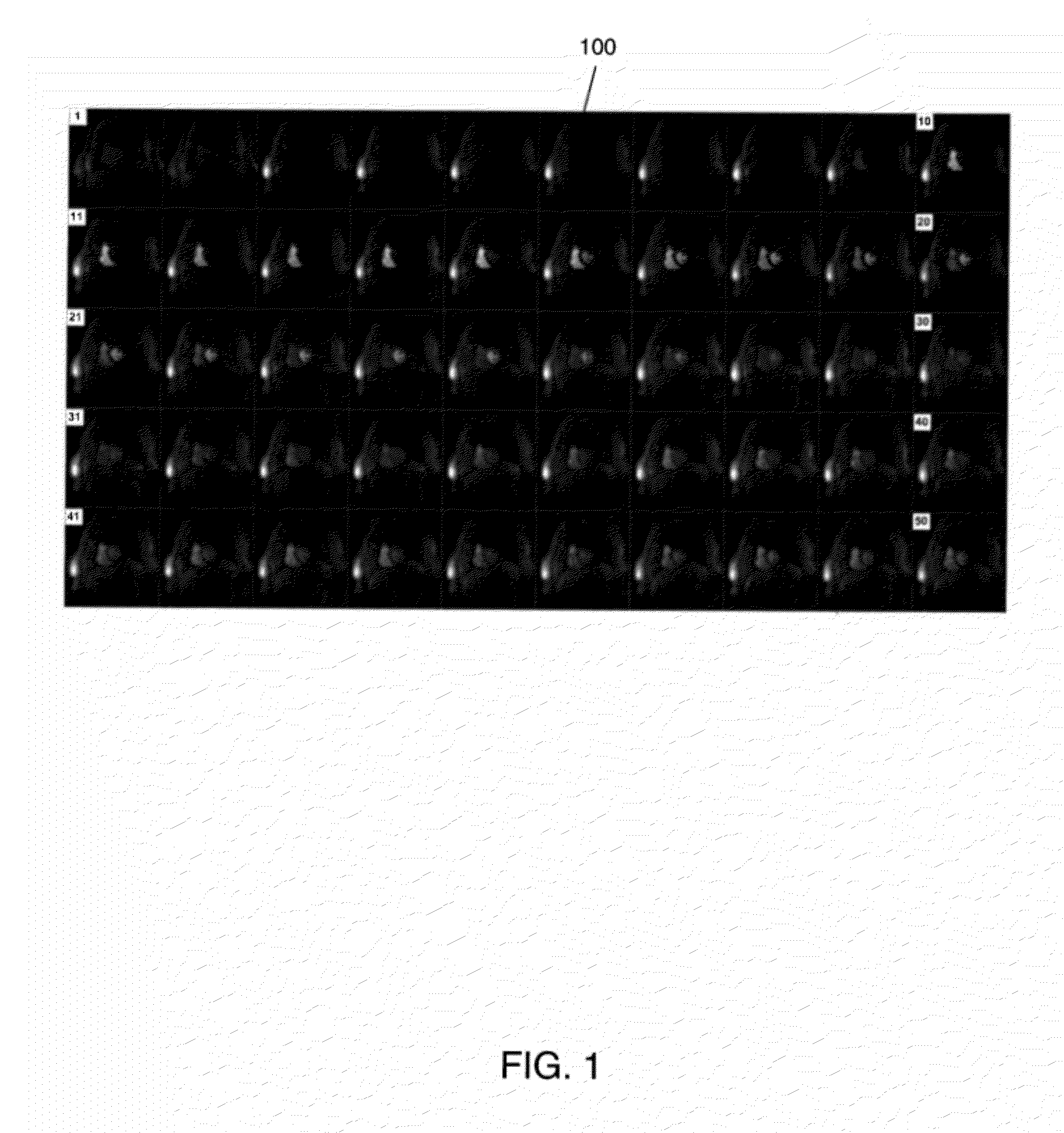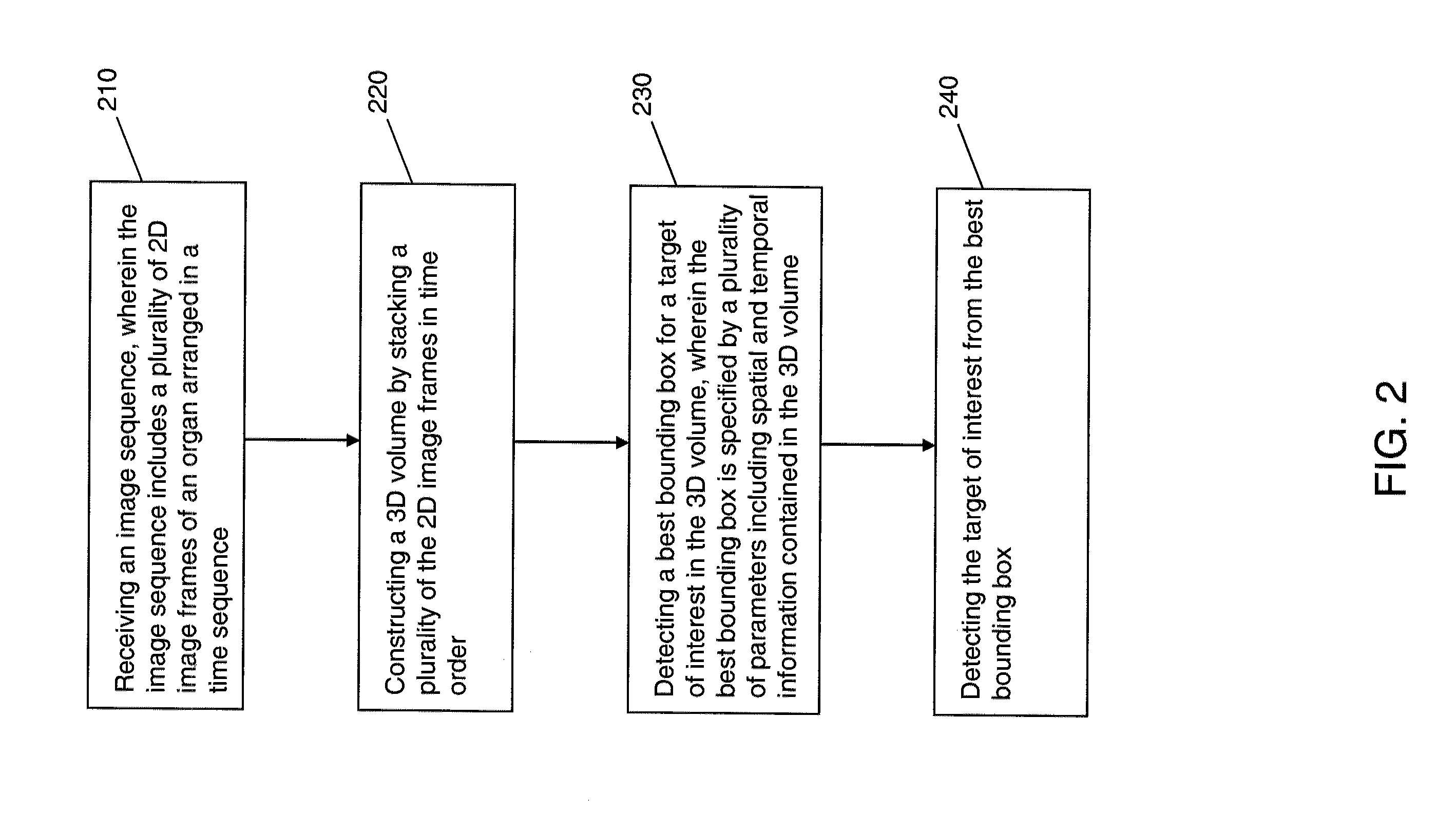Detection of Landmarks and Key-frames in Cardiac Perfusion MRI Using a Joint Spatial-Temporal Context Model
a spatial-temporal context and landmark detection technology, applied in image analysis, image enhancement, instruments, etc., can solve the time-consuming problems of clinical routine applications of cardiac perfusion mri, and achieve the effect of enhancing the discriminative capabilities of the contextual model
- Summary
- Abstract
- Description
- Claims
- Application Information
AI Technical Summary
Benefits of technology
Problems solved by technology
Method used
Image
Examples
Embodiment Construction
[0032]An overall workflow of a method for the detection of landmarks and key-frames in a cardiac perfusion magnetic resonance imaging (MRI) sequence using a joint spatial-temporal context model, according to an exemplary embodiment of the present invention, will now be discussed, in brief, with primary reference to FIG. 2. Detailed explanations of the workflow in FIG. 2 will then follow with reference to the remainder of the figures.
[0033]The following discussion formulates the simultaneous landmark and key-frame detection of FIG. 2 into a three-dimensional (3D) object detection framework. Referring to FIG. 2, an image sequence is received (210). The image sequence includes a plurality of two-dimensional (2D) image frames of an organ arranged in a time sequence. An example of the received image sequence may be the cardiac perfusion MRI sequence 100 of FIG. 1. However, the present invention is not limited thereto. For example, the received image sequence may be chest MRI sequence 900...
PUM
 Login to View More
Login to View More Abstract
Description
Claims
Application Information
 Login to View More
Login to View More - R&D
- Intellectual Property
- Life Sciences
- Materials
- Tech Scout
- Unparalleled Data Quality
- Higher Quality Content
- 60% Fewer Hallucinations
Browse by: Latest US Patents, China's latest patents, Technical Efficacy Thesaurus, Application Domain, Technology Topic, Popular Technical Reports.
© 2025 PatSnap. All rights reserved.Legal|Privacy policy|Modern Slavery Act Transparency Statement|Sitemap|About US| Contact US: help@patsnap.com



